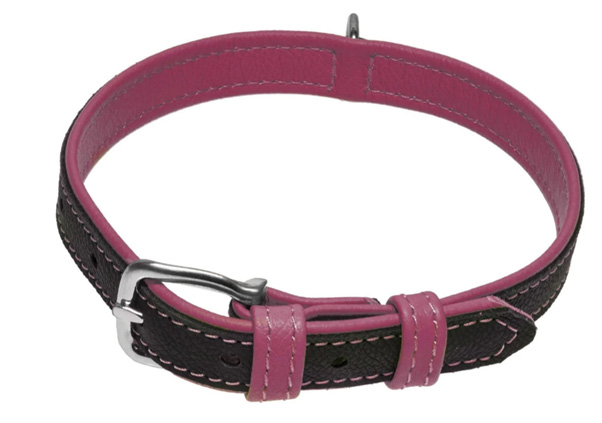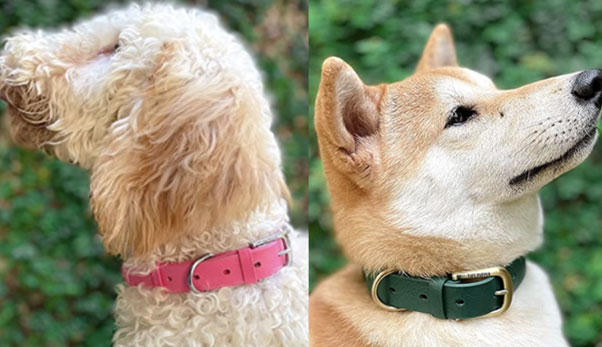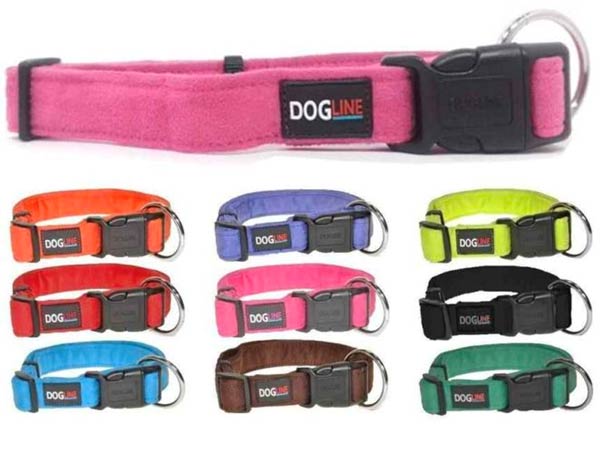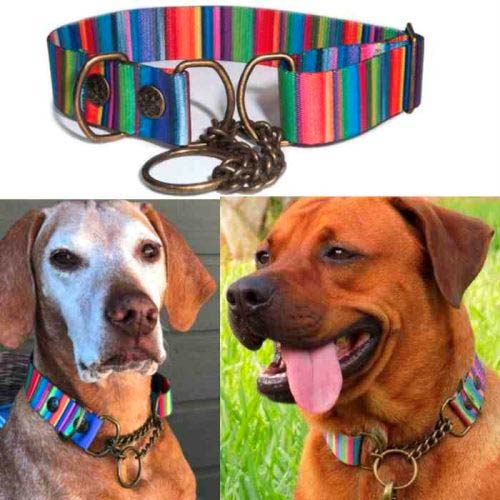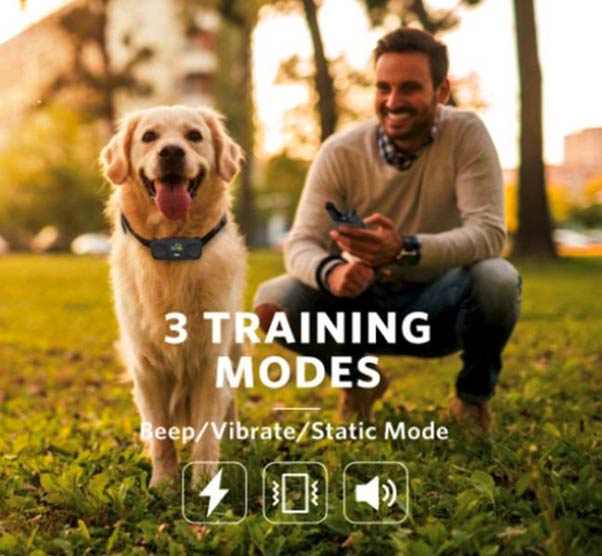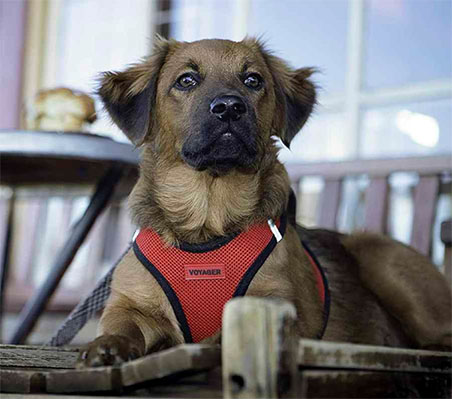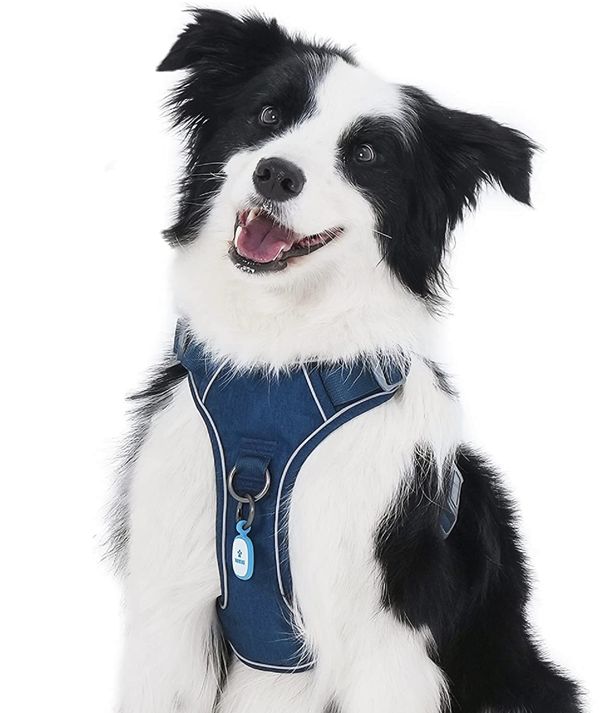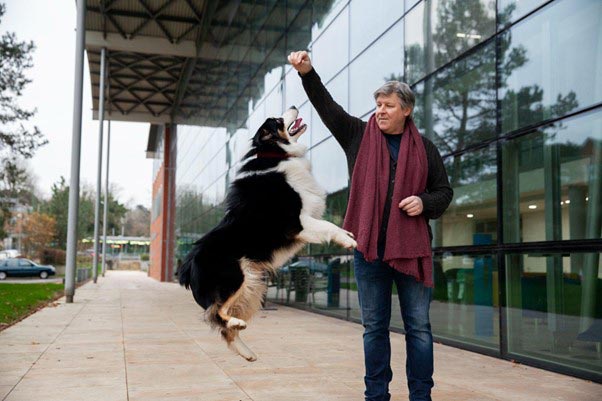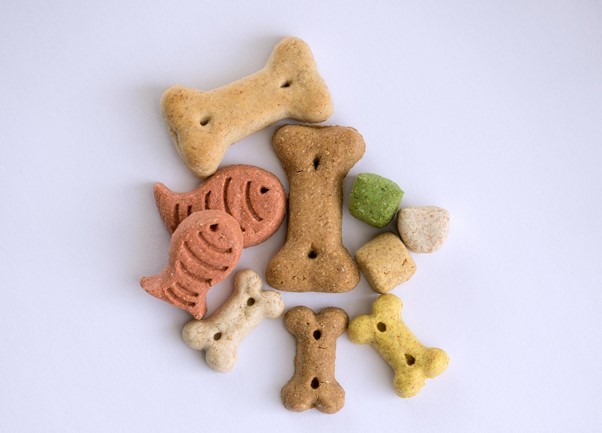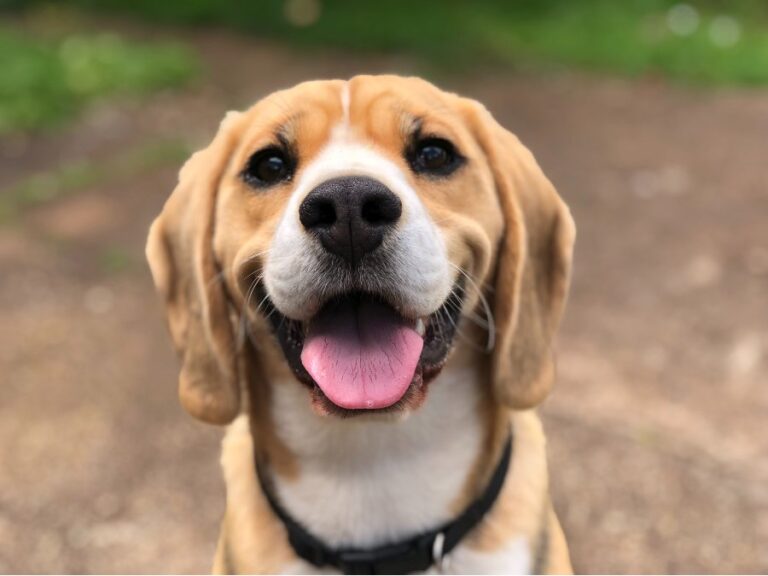The Scoop on Dog Collars and Harnesses: What’s Right for Your Pet?
- Last updated on April 6, 2023
- By: Caroline Stowe
Choosing the perfect collar or harness for your pet can be a daunting task. With so many different styles, materials, and sizes available, it’s important to consider what type of collar or harness best suits your dog’s needs.
From basic collars to designer brands and specialty items made specifically for large breeds, there is something out there that will fit your pup perfectly.
In this article, we will discuss the various types of collars and harnesses available, as well as which ones are most appropriate for certain types of dogs.
We’ll also look at how to measure your pup correctly to find the right size item, and offer some tips on keeping them clean and comfortable while wearing their new accessories. By understanding these basics you should have no trouble finding the perfect fit for your furry friend!
Dog Collars
Dog collars are the most common type of pet accessory and can be found in a variety of sizes, styles, and materials. They typically include either a buckle or quick-release closure, as well as adjustable slots to make it easier to fit any size dog.
When choosing a collar for your pup, keep in mind that it should be snug but not too tight. A properly fitted collar should fit high on the dog’s neck, just below the ears. This allows for safety and comfort when walking or playing with your pup, as it prevents the collar from slipping off or choking them.
Types of Dog Collars
Buckle Collars
The most basic type of dog collar is a buckle collar. This type of collar is made from either nylon or leather and features adjustable buckles so that they can be adjusted to fit your pet perfectly.
It’s a great option if your pup loves to explore, as it provides more security than other types of collars and won’t easily come off. They come in a variety of colors and patterns too, so they are great if you want to add some personality to your pup’s look.
Quick-release Collar
This type of collar is made from lightweight nylon and features a quick-release closure. It’s ideal for pups who have an aversion to being restrained by buckles, as the closure makes it easier to take off when needed.
Martingale Collar
Also known as “limited-slip” collars, are similar to buckle collars. These types of collars are great for dogs who pull on their leashes, as they give enough slack while still helping to keep them under control.
This style has two loops — one large loop that goes around the neck and another that attaches to a leash.
The second loop tightens when pulled, which prevents dogs from slipping out while still providing more control than a standard collar.
This style works best with medium-sized to large dogs that tend to pull on their leashes. Martingale collars also come in many different colors and designs.
Shock Collars
Shock collars are popularly used to train and control dogs, from having them obey commands to curbing unwanted behaviors such as barking and aggressiveness. Also known as e-collars, these accessories provide a gentle electric shock when activated for effective conditioning of your pup.
GPS-enabled Tracking Collars
There are GPS-enabled tracking collars that use GPS technology to help track your pet’s location in case he or she ever gets lost. These collars provide real-time location information to help you find your pup should they wander off. It usually requires a monthly subscription fee but can provide peace of mind should something happen to your pup while out on a walk or hike with you.
Harnesses
Dog harnesses are an alternative to traditional collars, providing a comfortable and secure way to keep your pup safe. They typically feature adjustable straps that allow you to customize the fit, as well as a leash attachment point.
Harnesses come in a variety of styles including step-in designs or ones that slip over their head like a vest. Depending on the style you choose, you can also attach a leash directly to the back or front of the harness if needed.
Types of Dog Harnesses
Vest Harnesses
Vest harnesses are designed to provide extra coverage and comfort for your pup. They usually feature adjustable straps that allow you to customize the fit, as well as breathable mesh material which helps keep your pup cool in warm weather.
Step-in harness
Similar to vest harnesses, these feature adjustable straps that allow you to customize the fit and a leash attachment point on the back or chest. The main difference is that step-in harnesses require your pup to “step in” rather than slip over their head.
No-Pull Harnesses
No-pull harnesses work similarly to vest harnesses but instead feature two attachment points—one located near the chest area and one at the back.
This helps distribute pressure evenly across both areas when your pup pulls against their leash during walks or hikes. This helps discourage pulling behavior over time with consistent use!
Front-Clip Harnesses
Front-clip harnesses feature an attachment point located near the chest area that allows you to easily clip in a leash without having any extra bulk near your dog’s neck.
This makes it easier for them to move freely without getting tangled up or having excess pressure placed on their necks while walking!
Click the link below to learn more about dog harnesses and how to choose the right harness for your dog.
How To Measure Your Pet to Find the Right Size Item ?
Trying to find the right fit can be as difficult as finding a needle in a haystack. To make your life easier, here are a few tips on how to accurately measure your pup and get the perfect fit for a collar or a harness!
Dog Collar Size: Measure Around Your Dog’s Neck
The neck measurement is essential in finding the right size collar. To get an accurate neck measurement, use a soft measuring tape around the circumference of your pet’s neck where their collar would sit.
Make sure that you place two fingers between their neck and the tape measure. This will ensure some additional room if needed when sizing up from this measurement.
It’s important to note that collars should not be too tight or too loose; otherwise, it may cause discomfort or create an unsafe situation for your pet.
Generally, if you can fit two fingers comfortably between their neck and their collar, then it’s a good fit.
Dog Harness Size: Measure Around Your Dog’s Chest
When measuring for a harness, it is just as important to also measure around your pup’s chest just behind its front legs. This will help get an accurate size of what type of harness they need.
You want to make sure that there is enough room under the armpits so they are comfortable but also tight enough so they won’t slip out when pulling on a leash.
Again, like with collars, you need to make sure that two fingers fit comfortably between their chest and the measuring tape.
Use Size Charts for Reference
Once you have taken all of these measurements correctly, refer back to size charts provided by manufacturers for reference on what size collar or harness best fits your pup!
Remember that sizes can vary per manufacturer so always double-check before ordering anything online or buying in-store!
Tips on Keeping Collars and Harnesses Clean and Comfortable
Keeping your dog’s collar and harness clean is important for both comfort and hygiene. Dirty collars and harnesses can cause irritation, rashes, and even infection if left unchecked.
To keep your pup looking its best, the following are some tips on how to keep your dog’s collar and harness clean and comfortable.
Wash Regularly
Depending on the material of your collar or harness, you should be washing it regularly with a mild detergent. This is especially true if your pup loves rolling around in the mud!
Some materials are machine-washable while others require handwashing. Never forget to air-dry any collars or harnesses; tumble drying can damage the material of the product.
Remove Buildup
Collars that have been worn frequently can accumulate dirt, sweat, drool, and fur over time.
To get rid of this buildup without damaging the material of the product, use a damp cloth or paper towel with warm soapy water or rubbing alcohol (for tougher stains).
Be sure to avoid scrubbing too hard as this could cause discoloration or damage to the fabric or metal parts of the product.
Inspect for Wear
Check your dog’s collars and harnesses every once in a while for signs of wear such as fraying straps, loose stitching, cracked buckles, etc.
If you notice any signs of wear, replace the product immediately as these defects can become dangerous if not corrected right away.
How to remove odor?
If you find that your pup’s collar has an unpleasant smell to it due to sweat or bacteria build-up then try soaking it in a solution of one teaspoon of white vinegar mixed with one quart of water for about 15 minutes before rinsing thoroughly with cold water afterward.
Another great way to combat odors is by sprinkling baking soda on the surface of the collar before wiping it off with a damp cloth after a few minutes have passed.
How To Select the Right Collar or Harness for Your Pup
Choose Breathable Materials
When picking out new collars and harnesses for your pup make sure that they are made from breathable materials such as nylon webbing which will help keep them cool during hot summer days when being outdoors.
Additionally, try avoiding products made from plastic as these materials tend to trap heat which can lead to discomfort for your pup over time if used too often during hotter months!
Be Mindful Of Hair Types
Longer-haired dogs may need special considerations when picking out collars since their fur can easily get tangled up in hardware pieces such as buckles or D-rings which could potentially cause discomfort or even injury if left unchecked!
If you have a long-haired pup then look into getting either soft-lined collars that won’t snag onto their fur easily or breakaway safety collars which will automatically release themselves if pulled tight enough by accident.
Just make sure these types aren’t always worn since they’re not meant for everyday use!
Choose The Right Size
It’s important that you pick out collars that fit appropriately; not too tight nor too loose but just right like Goldilocks would say!
Too much slack could allow them to slip out while too little slack could cause chafing against their skin so always double-check measurements before making any purchases!
Opt For Easy On/Off Options
Look into purchasing snap buckle-type closures rather than traditional buckles since these allow you to take off/put on more quickly without having to fiddle around each time adjustments need to be made (ease of use = less frustration!).
Additionally, try going for adjustable sizes so if needed later down the line small adjustments can be made without needing to purchase another size.
Be Creative With Color & Design
Don’t forget that fashion plays an important role when selecting items such as dog collars & leashes; why settle for boring colors & designs when there are plenty of creative options available today!
Get creative & have fun accessorizing – who knows maybe even start a trend amongst pup friends!
Conclusion
Finding the right type of collar or harness for your pet can be tricky but it doesn’t have to be! With so many options available today from traditional collars to no-pull leashes, there’s something out there that will fit every pup’s individual needs perfectly.
So don’t settle; find the perfect dog collar or harness today so that you and your pooch can enjoy safe adventures together!
Take some time today to explore all of these different options until you find just what works best for both you and Fido!
-
Author: Caroline Stowe
- Updated on April 6, 2023
Disclaimer: This article doesn’t intend to replace professional veterinary advice, nor should it be used as a substitute for veterinary services, diagnosis, or treatment. The content on this website, including information and opinions expressed herein, are intended for general informational purposes only. In case you have concerns or questions regarding your dog’s health and diet requirements, please consult your veterinarian before doing anything that might affect it.
DogPetGuide.com and the writer are not responsible or liable for any damage, liability, costs, or claims arising from any possible consequences of the reader’s action after reading this article.

